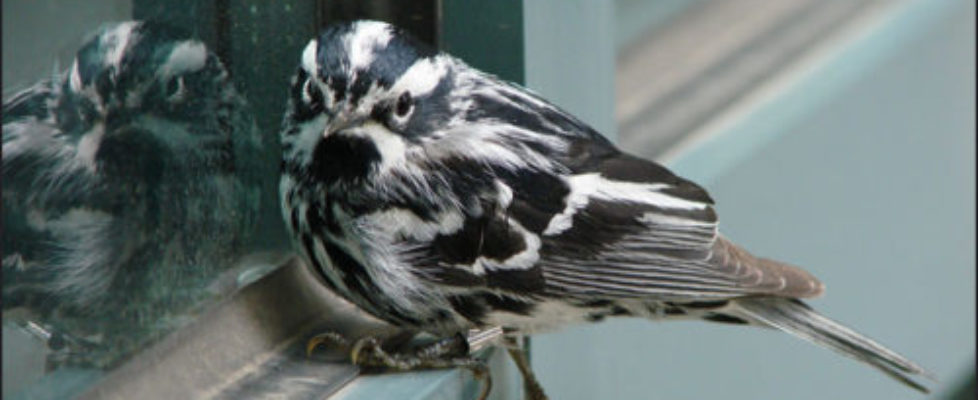Bird-Safe Buildings – What Can You Do?
On a recent walk around the New York Life Insurance Building in Sleepy Hollow, I found seven carcasses of birds.
This is no anomaly: bird strikes are a major factor in declining populations. Each year in the U.S. an estimated 365 million to 988 million birds die from collisions with glass (Audubon magazine). The birds most often affected include Wood Thrush, Hermit Thrush, Painted Bunting, and hummingbirds.
Birds hit commercial buildings, houses, sliding glass doors, and bay windows: any glass surface larger than a hand, under the right lighting conditions, because windows reflecting the surrounding habitat may look like a flight route to a bird.
What can be done about this problem?
- Buy bird-safe window materials. American Bird Conservancy rates certain products as “Effective” and “Highly Effective” in preventing collisions.
- Currently there are three commercial products rated as Highly Effective and six as Effective; all are intended for application on existing windows.
- If you work in companies that have large glass expanses, discuss with your building engineering department the value of installing bird-safe modifications to windows.
- Lobby for tax breaks for companies that are willing to install new bird-friendly windows or apply bird-friendly tape, especially if they have multiple large buildings.
- Apply household glue to outside windows and add sparkles in wavy lines less than 6 inches apart.
Valerie Heemstra
To find out more, visit www.abcbirds.org/program/glass-collisions
More Resources
- Cornell’s All About Birds has a helpful page about birds and windows.
- Massachusetts Audubon has some additional info and tips about bird window collisions here
- Mass Audubon also offers a helpful page about birds attacking their own window reflections, a different issue most often seen in spring.



